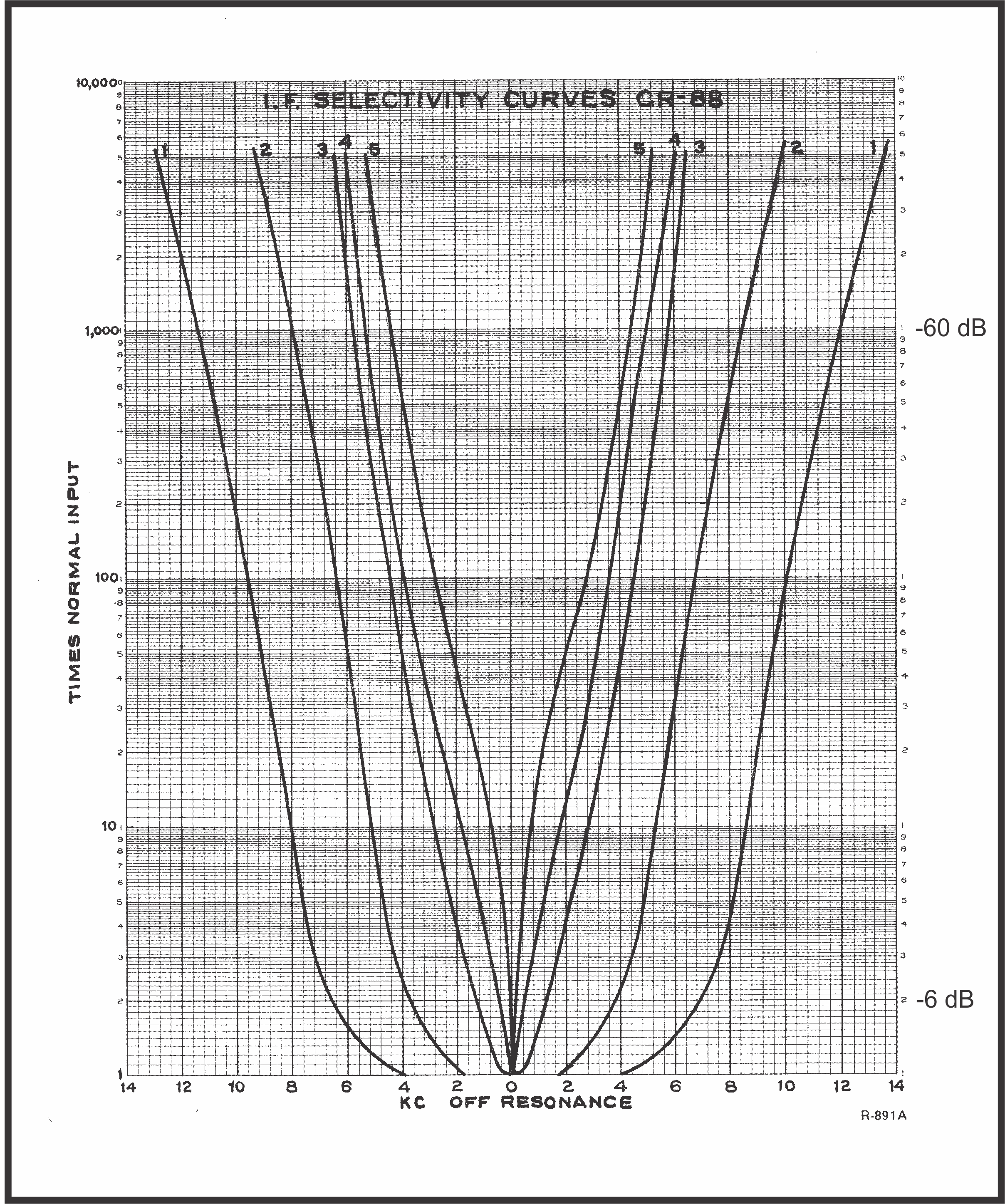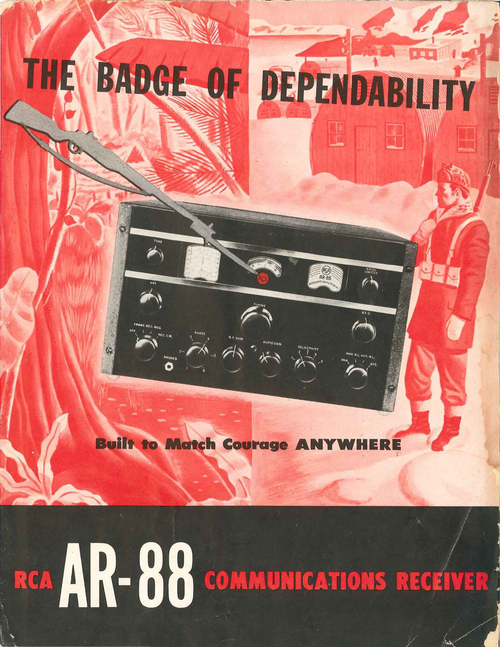The
RCA AR-88 Family of HF Communications Receivers
AR-88 Manuals
With the success achieved by the deluxe diversity, it was decided
in 1939 to develop a communications receiver for general
application which would include all the desirable electrical
and mechanical features possible from a theoretical standpoint,
as well as a design which would lend itself to mass production,
with the economy of price resulting thereby. Combining
the technique learned in the production of millions of home
receivers, experience with previous communication receivers, and the advice of the U. S. Army and Navy, as well as RCA Communications, this resulted in the AR88 family of receivers. They are physically rugged, electrically stable to the extreme, and possess superior selectivity and sensitivity. Their acceptance has been wide. A very large number of these
units have been produced to date.
This group includes the following:
AR88 - 2-1/2 watt audio output, 550 kc to 30,000 kc
ER88 - 550 kc to 30,000 kc, but with 10 watts audio output
CR91 - 2-1/2 watt audio, 75 - 550 kc 1500 - 30,000 kc
DR89 - 550 - 30,000 kc diversity receiver including 3 AR88's.
With the availability of such a receiver as the AR88, it was
natural that three of these be combined with a tone keyer to
form a simpler diversity than the original deluxe model. Excellent results have been realized as the military branches of the allied governments become more familiar with the advantages and performance of this simple equipment. An adaptor unit to permit reception of frequency shift signals with this receiver is now being developed.
Quoted from:
TO:
THE PEOPLES COMMISSARIAT OF ELECTRICAL INDUCTRY
FROM:
RADIO CORPORATION OF AMERICA
(A statement of capabilities sent to the Soviet government in late 1944 or early 1945. It was part of an attempt to reactivate the 1935 technology-transfer deal under which RCA built a TV transmitter for Moscow, etc. READ IT HERE)
THE PEOPLES COMMISSARIAT OF ELECTRICAL INDUCTRY
FROM:
RADIO CORPORATION OF AMERICA
(A statement of capabilities sent to the Soviet government in late 1944 or early 1945. It was part of an attempt to reactivate the 1935 technology-transfer deal under which RCA built a TV transmitter for Moscow, etc. READ IT HERE)
The AR-88 used the newest vacuum tubes for optimun performance;
- 6SG7 RF/IF amps for max gain and low noise
- 6SA7 mixer with separate temperature compensated osc.
- Rated sensitivity is 0.5 microvolts on all bands.

IF and Deytector:
- 3 IF Stages with 12 tuned circuits
- Crystal filter with variable bandwidth (Positions 3,4, and 5)
- 6:60 dB filter shape factor better than 1:2 - Respectable even today
- Effective Noise limiter
- Audio tone control
Image Rejection falls off at the high-frequency end, but two tuned-RF stages and an antenna trimmer maintain a rejection of 46 dB at 28 MHz. This is respectable for any receiver with a low IF frequency (455 KHz), and only gets solved by going to a multiple-conversion architecture like the post-WWII Hammarlung SP-600.
Tuning-dial Accuracy: While the gear-driven tuning and vernier readout allow the operatior to accurately log the tuned frequency and return to it later, an external frequency reference is required for really precise frequency setting. This is a problem that exists with all tunable HF sets until the development of the Collins 51J and R-390 receivers after the war. The Collins sets are double conversion designs with a crystal controlled converter feeding a carefully calibrated tunable medium-frequency IF. The Racal RA-17 represents another solution to this problem, the Wadley loop. In all other respects, the AR-88 performs as well as these later sets.
If you want to find them, use a Collins. - If you want to listen to them us an AR-88!
SSB Performance: These radios were designed for AM, CW, and RTTY. They are stable enough, and have reasonable IF selectivity, so you can copy SSB if you're willing to settle for manual gain control. Really good SSB reception requires a product detector and an automatic gain control designed for SSB.
Return
to the SkywWaves Homepage
